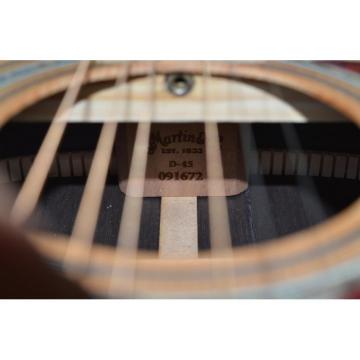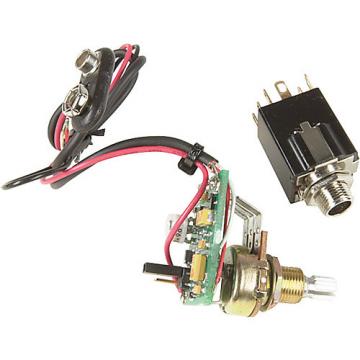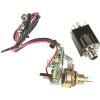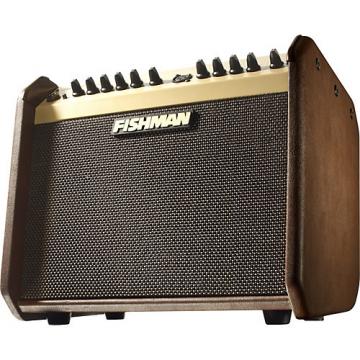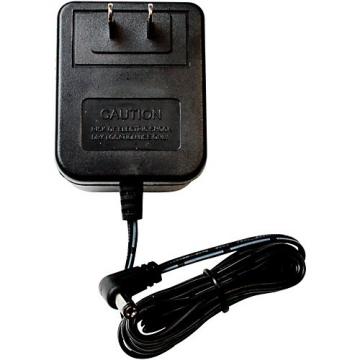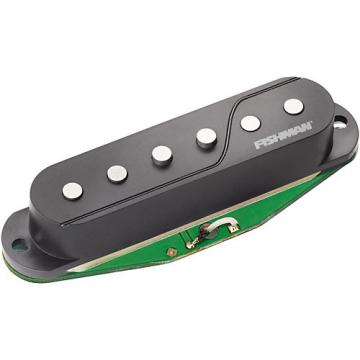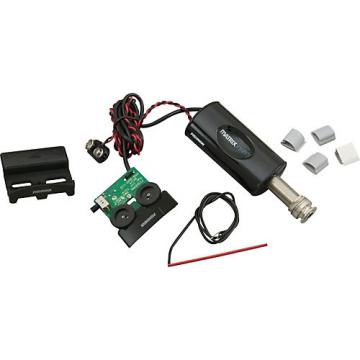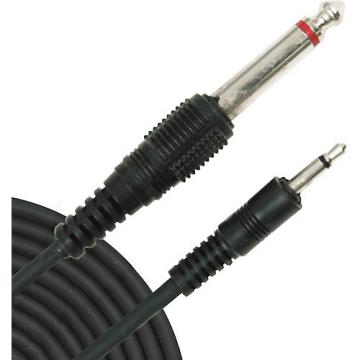The Fishman Powerchip Preamp brings onboard active piezo volume control to your Fishman Powerbridge pickup system. Allows you to vary the blending of your guitar's 2 pickup systems. A "smart" jack senses mono or stereo cable. 9V battery required.
Displaying reviews 1-3
Back to top
I use this on my Highway 1 Strat that's been modded with replacement pickups and a Fishman Vintage Powerbridge. I'm satisfied, but wish the thing had a tone control - maybe a stacked pot would provide that feature. Pluses: 2-pin pc jumper for correcting phasing (no de/resoldering), volume trimmer pot. Minuses - had to drill jack cavity in guitar for rear clearance for the kit's instrument jack, and rout rear body for a 9-volt battery box to power the Powerchip...a lot of work if you don't have the tools and knowhow (I do). A slip with the drill or the router template, and your guitar's finish is badly marred (I went into this project figuring on refinishing, so that wasn't an issue for me). If I had it to do over, I'd get the Fishman 'offboard' pedal - you get more tone control, rocker pedal volume control, no battery box (and no battery drain if guitar is left plugged in). The Powerchip preamps the existing pickups (ugh...in my case, Lindy Fralin SP42's...the transistor preamp KILLS the tone) unless you use a stereo (TRS) jack to connect to the instrument. The Powerchip is NOT bypassed with a mono jack - only with a stereo jack. Quality stereo 'splitter' cables (stereo TRS 1/4" male phone jack split to two 1/4" mono female phone plugs) are hard to come by, but it works superbly IF the piezo is sent to a dedicated acoustic guitar amp (like I use).
Fishman Powerchip Preamp
.Have used powerchip in two guitars. One factory installed on Parkwood PWH4 Hybrid and other personally installed on Washburn RR250. Both guitars were designed for combining piezo and electric pickups.
First the bad:
1. Extremely hard to solder wires on tiny chip! I like to tinker with my guitars and have modified many. Nothing has been as complex as wiring the powerchip.
2. Once you get it wired up there are issues. The chip is designed to sense when you have a stereo jack plugged in so that you can split the piezo and mag pickup to two amps or whatever. Great idea but in both guitars I have experienced the chip trying to switch to stereo mode when I have a mono cable plugged in. This causes a popping sound or static as it switches back and foreth. The cause if this problem (i found after hours of trying to fix) is the delicate and over complicated 9-Pin jack that you plug your 1/4 inch cable into. There are several tiny spring sensors that are supposed to detect if the cable is mono or stereo. If you have a tight fitting cable and dont move around when you play, no problem. Howerver, if you use your average 1/4 inch and move or wiggle the cable one way or the other you get the popping static symptom of the chip trying to switch back and foreth.
A temporary fix is to bend the jack springs out so they fit tighter on the cable but they eventually become loose and symptoms return.
Solution: remove the 9-Pin jack and hard wire the chip to permanent mono mode. It took me a while to figure out which wires go where but since I switched to simple mono jack there have been no problems.
Now the good: I love the sounds I get by combining the mag pups with the piezo! Exactly what I want. If you have never played or heard a good hybrid guitar you are missing out. I am surprized fishman has allowed shuch a hit-and-miss product. In this instance I think they tried to do too much in a one pot chip. A simple physical stereo/mono toggle switch would have saved me hours of work, headache and dissapointment with their product.
Sadly Fishman hasn't listened to reviews and no one else has come up with a similar product. So if you want to have hybrid functionality it is Fishman headaches or nothing.
I recommend this product if you have skill and time install and modify only because there is no other option.
Fishman Powerchip Preamp
.I am actually a retired musician, but, I classify myself as "Experienced." If you have some money just lying around doing nothing, this might be the place to spend it. Most of us, do not have this luxury, however. I purchased this unit with a vintage type of Fishman Piezo Strat trem, some time ago from MF. I wanted to build a "special" guitar. I had a Yamaha RGX 770 (it has been so long ago that this might not be the actual number) that I had purchased from MF around 2003. I liked the idea of the piezo under the tremolo, but, did not use it, very often. When I had an opportunity to upgrade into another brand of guitar, without losing any money on the instrument, I traded the Yamaha on it. Of course, after I no longer owned this guitar, I started finding uses for it, so,it was not as good of a deal as I had thought. Since I have built a multitude of guitars, both from "scratch" and from parts assemblages, I thought that I would build a "Strat," with the Fishman system. I bought both the tremolo and this unit, and put it with the multitude of guitar parts that I have on hand. Recently, I bought an LR Baggs Piezo system that had been sitting on the shelf of a fellow guitar builder, who was starting to sell off the parts that he did not think that he would use. I installed this unit on a "high end" Fender Stratocaster, without much trouble. The most difficult thing was to cut the battery box location on the rear of the guitar, which I am more than qualified to do, having been taught the trade of cabinet making. The LR Baggs unit was complete,in the box, and when the project was finished, there was a great improvement with the overall sound quality of the instrument. Since I had the Fishman unit on hand, along with a variety of upgrade parts, I thought that it might be a good time to assemble one of those "special" Strats, while the idea of wiring was still fresh on my mind. First thing about the Power Chip unit is that only a few of the wires that are necessary to incorporate it, with the Fishman piezo vintage tremolo, are soldered to the circuit board, so additional wiring has to be soldered to it. I do a few different types of soldering, but, this one was about as difficult as I have seen. The "pads," onto which small wires have to be soldered are miniscule. Even with the Optivisor with the highest magnification, they are difficult to solder a wire onto. So, if you are not an absolute professional, when it comes to soldering, this Power Chip is not a project that anyone would want to take on. As I was painstakingly attaching the additional wires, I thought that this is something that should have been done when the Power Chip was being soldered together at the factory. I am sure that there would not have been that much of a labor intensity, usually reflecting in the price, but, this appears to be how Fishman believes that they can save money in production. As it is, this is not an inexpensive unit, as I have already pointed out. For the money, there is not any real appreciable gain in sound quality, so, my advice is to save your money. The unit is suppose to draw very little from a 9 volt battery, but, since there were a couple of other assessories that also need the battery power, I wired them together. This did not work very well, but, I found that the Power Chip functioned, much better, when it was isolated to its own battery. I was not fond of the idea of having to cut another battery route, so, the other assesories were put back on the shelf. This was an HSS pickup configuration, which is passive, so the only alteration was the addition of a mini switch to the humbucker for Series, Parallel, and Split wiring option, since the neck pickup was a stacked Humbucker, so, in reality it was an HSH configuration. I believe that the "Cons" cover this, adequately. The only thing that I can see that this unit is good for, is to install in a wall hanger, thus wasting a perfectly good tremolo unit, so that it can be a conversation piece.
Fishman Powerchip Preamp
.


